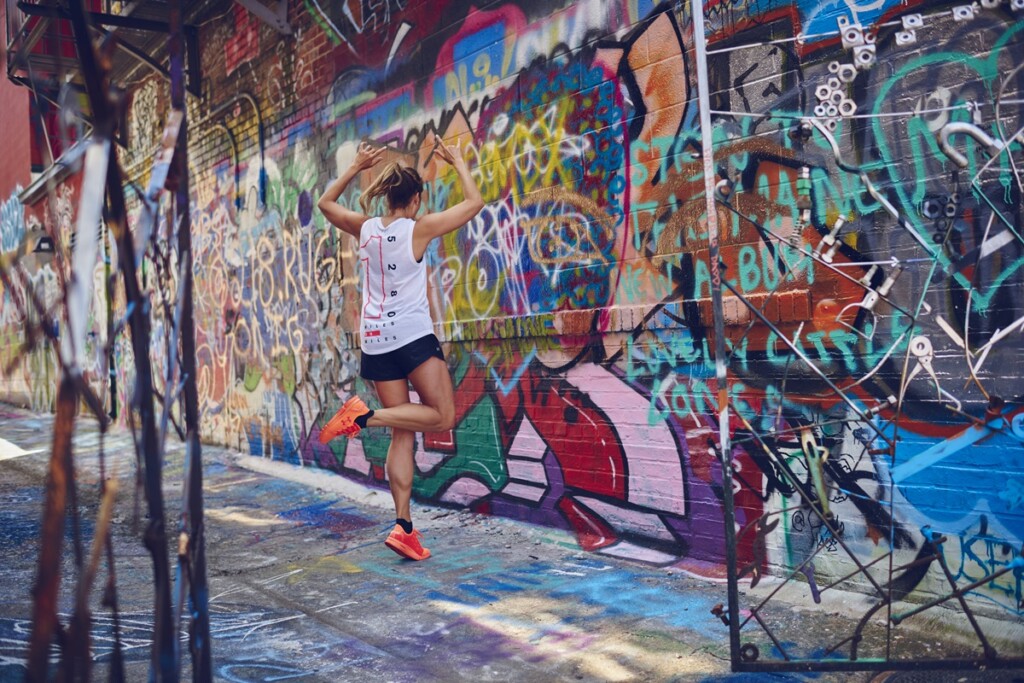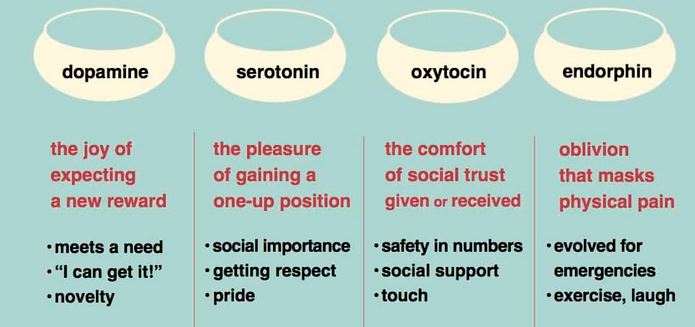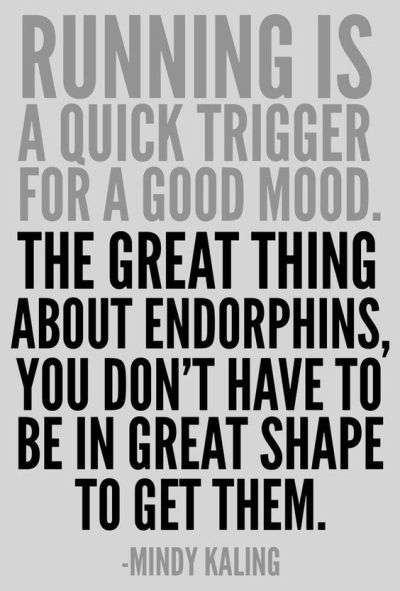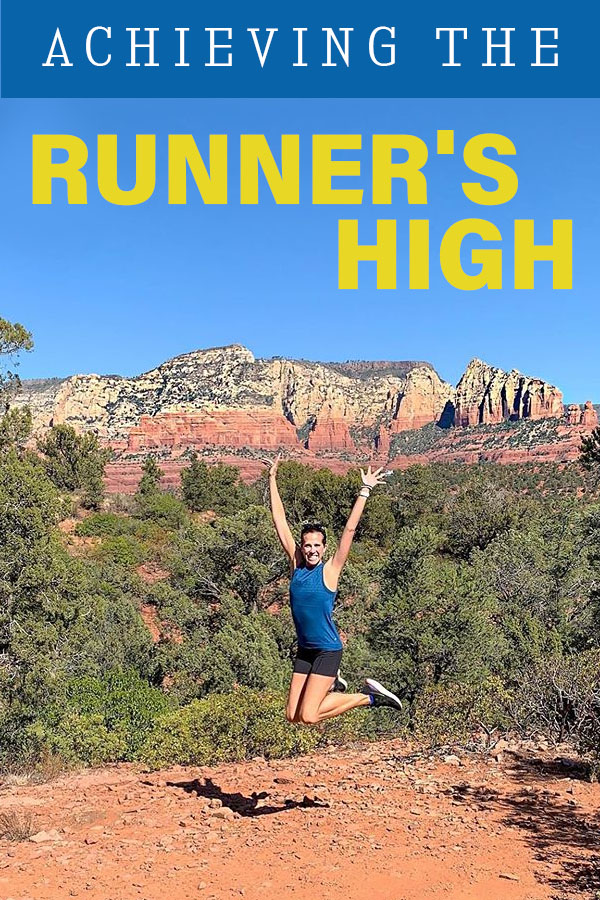Long time runners often explain that part of what keeps them coming back mile after mile is the runner’s high. That feeling of euphoria from having just pushed your body to a new level. But what causes it and how can you make it happen more often??
The idea of a runners high elicits a lot of weird faces from new or non-runners who can only imagine their tomato face and grunts to just make it through a mile. Hey, we remember those times too.
Every runner knows the feeling though.
But what exactly is the runner’s high? Is it merely a myth, a figment of the imagination fueled by endorphins and adrenaline? Or is it something more profound, a glimpse into the true potential of mind-body connection?
In this article, we delve deep into the mysteries of the runner’s high, exploring its psychological and physiological underpinnings, its transformative power, and the strategies to achieve and extend its blissful embrace.
Here’s a breakdown of what’s really happening in your body and what you can do to bring it on more frequently.
And why it’s just one of the many benefits of running to our brain.
What is the Runner’s High?
“a state of euphoria experienced during prolonged running or other forms of aerobic, sustained exercise, attributed to an increase of endorphins in the blood.” – dictionary.com and basically everyone else…and should also include that it leads to a reduction in anxiety and feelings of calm.
But it’s more than just a fleeting sensation; it’s a complex interplay of physiological and psychological processes. Understanding the science behind this phenomenon offers a glimpse into the remarkable capabilities of the human body and mind.
Researchers have determined that it has to do with chemical reactions occurring in the body and brain under exercise-induced stress.
Historically, runner’s high is associated with a spike in endorphin levels, this theory dates back to the 1980s when researchers found increased blood levels of endorphins after such activity.
👎Endorphins: The Happy Hormone
Endorphins are the body’s home-grown opiates that act like a natural morphine. And it’s sometimes what we point to as a the reason we keep showing up run, after run even when it’s freaking hard; our brain gets a reward.
The problem with the theory from the 80s is that endorphins are fairly large molecules that are not able to pass through the blood-brain barrier, which a scientific way of saying they might be released during the run, but aren’t making their way up to the brain so quickly as to create our joyous feelings.
Because of that many people started to believe they COULD NOT be the cause of the runner’s high…but I say look at a lot of these attributes.
I absolutely believe that the feeling of having a achieved the task of doing your run, maybe with a group, definitely sharing it on social media and feeling the earned respect are going to create some dang good feelings!
But, if we’re sticking with the science and the endorphins alone can’t explain things, it means some other factor at play.
👍Dopamine: Reward and Motivation
Dopamine, a neurotransmitter involved in reward, motivation, and pleasure, also plays a key role in the runner’s high. Exercise has been shown to increase dopamine levels in the brain, leading to feelings of reward and reinforcement.
This surge in dopamine is thought to contribute to the sense of euphoria and exhilaration experienced during and after intense physical activity.
By activating the brain’s reward pathways, dopamine reinforces the behavior of exercise, making it more likely to be repeated in the future.
👍Endocannabinoids: The Real Runner’s High
Buckle up because this is going to get deep, but worth understanding for your next long run discussion! Recent years have taught us the endorphin rush was getting too much credit for our mood.
In 2015, German researchers from the University of Heidelberg conducted a study on a group of mice suggesting that endocannabinoid receptors may serve a role in the post-run feel good sensation.
Endocannabinoids produce naturally-occurring THC in the body, which just so happens to be the same chemical responsible for the psychoactive effects of cannabis. Boom, mike drop!! Proving even more why the body works with CBD for runners so well, it’s already designed for it.
How they create the post run high?
To test the theory, the researchers conducted two different tests to determine whether certain levels of endocannabinoids might produce the post-run high.
They split up a group of mice accustomed to running regularly on an exercise wheel into two groups: one that ran for five hours and another that remained sedentary.
The running group showed signs of calm behavior and more tolerance to pain than the sedentary group. What’s that mean for us?? Less pain while running, feeling in the flow of our endurance exercise.
In a second test, the scientists gave the mice endocannabinoid and endorphin molecules that block receptors in the brain. Those with the endorphin blockers showed little change in behavior, however the mice with the endocannabinoid antagonists appeared anxious and pain intolerant, despite several hours of running.
What Causes Runner’s High?
Endorphins and endocannabinoids react when the body is under stress.
Different from the sort of stress we feel with a big job interview, physical stress on the body from running or other exercise causes the production of these natural pain-relievers.
Researchers believe that the reason we feel a high after a long run can be attributed to the old days of chasing down our food. In order to eat, our ancestors had to run down large animals for hours, or even days.
That runner’s high feel from a long moderate intensity exercise, is the likely reason that humans could run for as far and fast as they did. Thanks those natural pain-killing properties released to the brain for keeping our muscles going and our mood elevated to keep trying.
Exercise stimulates the release of endocannabinoids in the brain, particularly anandamide, often referred to as the “bliss molecule.”
Anandamide binds to cannabinoid receptors in the brain, producing feelings of relaxation, euphoria, and well-being. This activation of the endocannabinoid system is believed to contribute to the pleasurable sensations associated with the runner’s high, offering a natural pathway to bliss and contentment.
Ways to Achieve the Runners High
Experiencing the runner’s high is not solely a matter of chance; it can be cultivated and prolonged with the right strategies.
The recipe for runner’s high generally requires a few important elements, however it’s not guaranteed to happen every time. However, we know that either going for a long easy run or a short HARD effort workout is mostly likely to trigger it.
An easy 3 miler probably won’t get you there and all out sprints that leave you feeling dead, also just too much.
Here are some workouts to get that runners high feeling:
- A challenging, but not all out run, like a tempo workout
- Two or more hours of continuous exercise, like the long run
- Running at 70-80 percent of your maximum heart rate (aka running easy) for a long run
- Getting enough sleep – seriously, it’s hard for everything to click when you’re run down
That last one is a great point to remind us that mindset matters. While you can be having a horrible day and get the runners high, it’s certainly a lot easier coming from a place of gratitude about being able to run or joy about why you’re out there.
Other factors that can help increase the chance of runner’s high include:
How do you know when you have runner’s high?
It’s generally described as a state of bliss. It’s not a drug induced feeling that makes you feel loopy or out of control, but you might find yourself on the verge of tears with gratitude for your run or simply smiling like it’s your birthday when you would normally be fatigued.
Trust us, you’ll know.
For some, it may manifest as a subtle sense of contentment and clarity, accompanied by a feeling of effortless flow and synchrony with the environment. For others, it may escalate into a transcendent experience characterized by a heightened sense of euphoria, time distortion, and a profound connection with the universe.
The intensity of the runner’s high can vary depending on factors such as individual physiology, running conditions, and mental state, offering a rich tapestry of experiences to explore.
And you can get it. The runner’s high feeling is pretty unmistakable once you’ve experienced it and like anything that makes it easier to find again!
Can New Runners Experience Runner’s High?
Since novice runners are working to build distance and endurance, it’s often thought unlikely that they’ll experience a runner’s high. However, as they build up to longer, more intense runs, the chance of getting that anticipated high increases.
Some individuals may be more sensitive to the effects of endorphins and dopamine, while others may require longer or more intense bouts of exercise to elicit the same response.
Experience plays a role because most new runners:
- Are not running for longer than 2 hours in the beginning
- May still be in the why-am-I-doing-this stage
- Are still working out the kinks in form and technique
- Haven’t yet found routes they love
I will say the longer I’ve been runner, I can often get that great feeling on a short run, which is probably more due to experience and expectation!
Other days, it’s just a bad run from start to finish even if I’ve hit all the things that should theoretically lead to the high.
And this all circles back to my fight for the endorphins because I think those mental rewards of achievement, pride and doing the hard thing can lead to some pretty incredible feelings! It might not be the exact runner’s high, but it’s pretty great.
Looking for more training tips?
Other ways to connect with Amanda
Instagram Daily Fun: RunToTheFinish
Facebook Community Chatter: RunToTheFinish
Get more running tips: Pinterest
Get every new post delivered to your inbox


